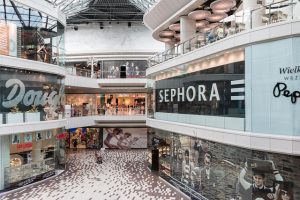By Retailist Editorial Team
In retail and influencer circles “Social selling” is considered as result of the increasing influence of social media on consumer behavior. Customers are now able to purchase products through their favorite influencers and online communities, creating a more personalized and social shopping experience. Popular products sold through platforms like TikTok and Instagram include everything from fashion, beauty, and lifestyle items.
One example of a company that has successfully embraced the trend towards social selling is Warby Parker. The eyewear company has formed partnerships with influencers and content creators to showcase their products, creating a sense of trust and credibility with customers. Additionally, Warby Parker has also used social media to directly reach out to customers and promote their products, resulting in a strong presence on these platforms.
Another example is Fabletics, an activewear brand that has leveraged social media to connect with customers and promote their products. The company has formed partnerships with influencers and fitness personalities to showcase their products, providing customers with a personalized shopping experience. Additionally, Fabletics has also used social media to reach out to customers and provide them with styling advice, further enhancing their presence on these platforms.
In conclusion, the trend towards social selling is a significant shift in the retail industry. Retailers are embracing the power of social media to reach a wider audience and drive sales. With more customers turning to social media for product recommendations and shopping advice, it’s becoming increasingly important for retailers to have a strong presence on these platforms.
*this article may include affiliate and links to retail and brand partners
Related Articles

The Rise of Digital Experience Platforms (DXPs) in Software Development
Software development is evolving, as Digital Experience Platforms enable the delivery of a personalised digital cross-channel experience. A DXP delivers integrated content, Artificial Intelligence, and low-code rapid application development tools. It streamlines the work of developers as well as marketers.

7 Employee Benefits That Can Help Your Business Increase Staff Retention
With so many businesses vying for the attention of skilled job candidates, it’s becoming more important to look for ways to make your offerings more appealing by adding unique perks that not every employer does.

How Retailers Can Prepare for the Summer 2025 Shift
Rather than focusing on isolated touchpoints or departmental KPIs, journey management provides a way to understand where the most critical pain points lie and how to resolve them systematically across the business.

Retailers Are Drowning in Data – Journey Management Could Be the Lifeline
Rather than focusing on isolated touchpoints or departmental KPIs, journey management provides a way to understand where the most critical pain points lie and how to resolve them systematically across the business.



 for the latest news and job opportunities in retail tech
for the latest news and job opportunities in retail tech 